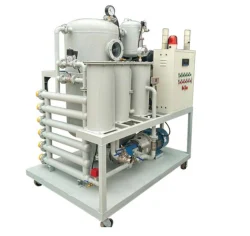Here's an overview of how oil and gas separation is typically carried out
2024-05-08
Oil and gas separation is a critical process in the petroleum industry, involving the separation of crude oil, natural gas, and water from a single mixture extracted from the ground. This process is essential for refining crude oil into usable products and for extracting valuable natural gas. The separation process typically occurs at production facilities such as oil rigs, offshore platforms, or onshore processing plants. Here's an overview of how oil and gas separation is typically carried out:
1. Primary Separation: The first stage of oil and gas separation involves the initial separation of gas, oil, and water as they come out of the well. This separation occurs in a primary separator, also known as a production separator or "free water knockout." In this vessel, the mixture undergoes gravity separation, with the lighter gas rising to the top, the oil settling in the middle, and the water collecting at the bottom. Skimmers or weirs are often used to remove any remaining oil or gas from the water phase.
2. Secondary Separation: After primary separation, the oil and gas undergo further treatment to remove any remaining impurities and separate the oil into its constituent components. This may involve additional separation vessels such as separators, scrubbers, or heaters. In these vessels, the oil is subjected to heat, pressure, and mechanical agitation to enhance the separation process. Emulsifiers or demulsifiers may be added to break down emulsions and facilitate phase separation.
3. Gas Treatment: The separated natural gas undergoes further treatment to remove impurities such as hydrogen sulfide (H2S), carbon dioxide (CO2), and water vapor. This may involve processes such as sweetening, dehydration, and compression. Sweetening removes toxic gases such as H2S through chemical or physical absorption, while dehydration removes water vapor to prevent corrosion and freezing in pipelines and equipment. Compression increases the pressure of the gas for transportation through pipelines or storage in tanks.
4. Oil Treatment: The separated crude oil undergoes further refining and processing to remove impurities and separate it into different fractions based on molecular weight and boiling point. This may involve processes such as desalting, distillation, fractionation, and purification. Desalting removes salt and other contaminants from the crude oil, while distillation separates it into various fractions such as gasoline, diesel, kerosene, and heavy fuel oil. Fractionation further refines these fractions into marketable products through processes such as cracking, reforming, and blending.
5. Water Treatment: The separated water undergoes treatment to remove any remaining oil or gas and to meet environmental discharge standards. This may involve processes such as skimming, filtration, settling, and chemical treatment. Skimming removes any remaining oil or gas from the surface of the water, while filtration removes suspended solids. Settling allows heavier solids to settle to the bottom, while chemical treatment neutralizes any remaining contaminants.
Overall, oil and gas separation is a complex and multi-stage process that requires careful engineering and monitoring to ensure efficient operation and compliance with regulatory standards. Effective separation is essential for maximizing the recovery of valuable hydrocarbons, minimizing environmental impact, and ensuring safe and efficient operation of petroleum production facilities.



